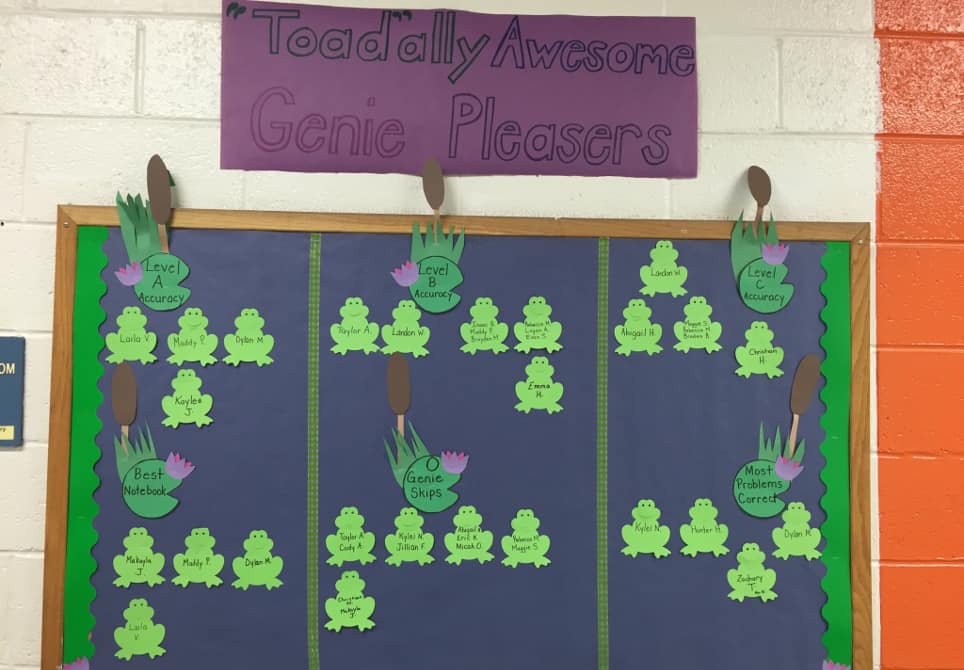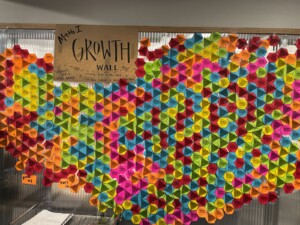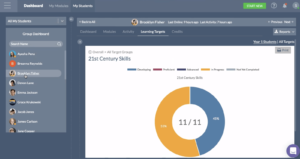The Role of Performance Monitoring in Competency-Based Education

By Jason Ellingson
This is the 7th in a series on the use of leaderboards and other strategies to encourage students to reflect on their performance.
Throughout this blog series, we have looked at innovative ways that education and business are motivating and monitoring performance, and the implications of that usage. One of the greatest shifts in the educational ecosystem is the implementation of competency-based education (CBE), which focuses on students having voice, choice and agency in their work. In CBE, students show what they know and progress based on demonstrated mastery. This improves student engagement and ownership of the learning.
Based on the information presented in this blog series, we know there are concerns about public displays of student learning. Child advocates and educators have warned about the potential competitive nature caused by data displays, as well as potential shaming of students. Because CBE will increase the variability of student progress as they progress at their own pace and even through different pathways, there may be a greater concern among educators about monitoring performance and displaying student progress publicly.
CBE Reduces Competition
First, let’s address the competitive aspect of performance monitoring through public display. In a nurturing culture that has clearly established multiple pathways of learning and demonstration of learning, there should be less focus on competition.
Students work with content they determined was appropriate to their passion and for their learning progression. Each student could have a unique pathway, and therefore, there would be no justification for comparison. The issue of competition would be minimized, except potentially when students wanted to compete to see who finished “learning” first.
CBE Reduces Public Shaming
Second, it is important to address the issue of shame potentially caused by public displays of performance. One concern from critics of CBE is that when students have greater freedom in what and how they learn, the achievement gap will actually grow, instead of shrink. There is concern that the academically proficient students will speed through the content and academically struggling students will be left in the dust.
The reality is that all students have areas of success and struggle. Students can accelerate in subjects where they are more advanced, and get support or take more time in others. In a carefully designed learning environment where CBE is fully supported, students learn from their strengths, not their deficits. The potential for shaming is reduced, because each student is building from previous successes.
It is important to build a culture and environment where students and teachers know there will be publicly visible signs of progress such as dynamic grouping. Further, all classroom environments would benefit from supporting the practice of productive struggle for the students and the teachers.
CBE in Public
Finally, let’s address the logistics of how performance monitoring could be publicly displayed in a CBE environment. With a myriad of student pathways, a typical educator may feel overwhelmed. In classrooms across the country that have begun implementation of CBE, most have had students keep track of learning in personal journals. While not an easily accessible display for all, the journals do provide an opportunity for data display.
Other classrooms have listed competencies or “enduring understandings” on a bulletin board and have color-coded the students’ progress in mastering the competencies. Further, there are software programs that will track attempts and achievements in learning competencies and display them on a dashboard for students and teachers. These programs provide students with instant feedback and allow them to know where they stand and what they need to progress.
While CBE may be a new learning approach slowly being implemented across the country, it does have the potential to have learners and educators collect, analyze and display data. In fact, it may very well resolve some of the concerns with current approaches to performance monitoring being publicly displayed.
Have advice on leaderboards or performance monitoring? Questions? Examples? We’d love to hear from you. Comment below or email our Editor@GettingSmart.com.
Jason Ellingson is a former superintendent, curriculum director, principal and teacher. Follow him on Twitter: @jasonellingson.
For more, see:
- Motivating and Monitoring Performance: 6 Recommendations
- To Leaderboard or Not: The Art of Motivating and Monitoring Performance
- Reasoning Minds Deserve Thoughtful Progress Monitoring
Stay in-the-know with all things EdTech and innovations in learning by signing up to receive the weekly Smart Update.






Lou Howell
I love the recognition that "all students have areas of success and struggle." It's so important that we all experience the "time to shine and to stretch" opportunities in our lives. The shine helps us with motivation - and in helping others learn; the stretch, when reflected upon, moves us forward, allows us to develop our grit, and assures the "can do" in our attitude and actions.